Upper Body Strength—Without Push-Ups
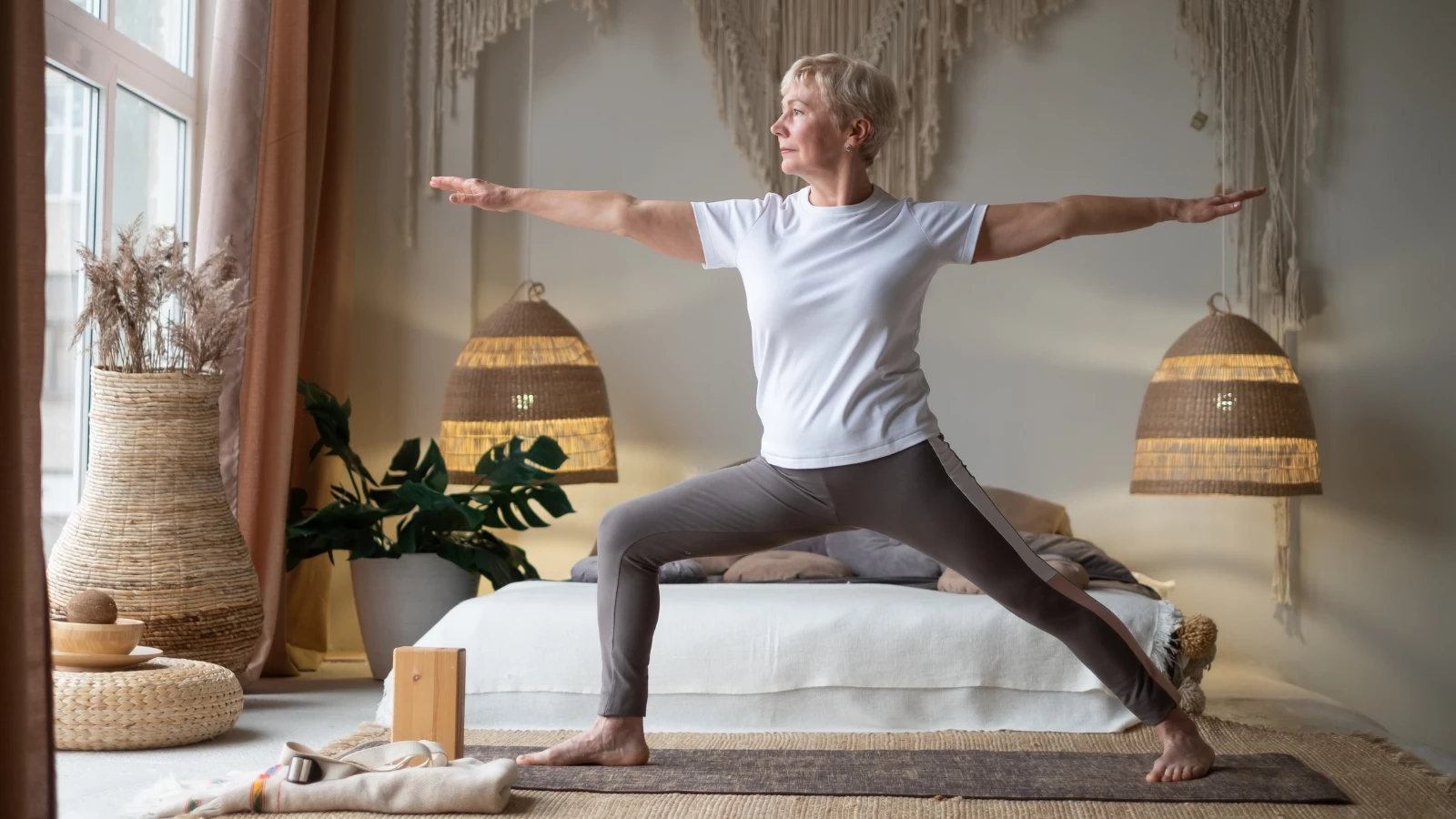
Article At A Glance
Do you remember having to take the Presidential Fitness Test in grade school? I always dreaded it, especially when it came to rope climbing. I was the kid who could never climb more than a few feet off the ground. And push-ups? Well, let’s just say it felt like a huge achievement if I was able to do more than 10. Fortunately, my upper body strength is much better these days.
And that’s not because I work out at the gym or with a trainer. I credit my yoga practice for making my upper body stronger. Having good upper body strength has an additional benefit. It also helps with weight management (something that becomes more challenging with each birthday).
Most people over the age of 50 tend to focus on lower body strength to prevent the accumulation of fat around the hips and belly. However, when you increase your upper body muscle mass, you also boost your resting metabolism which makes your body burn more calories. Yoga is a great way to improve upper body strength and manage weight—no push-ups required.
Upper Body Strength and Aging
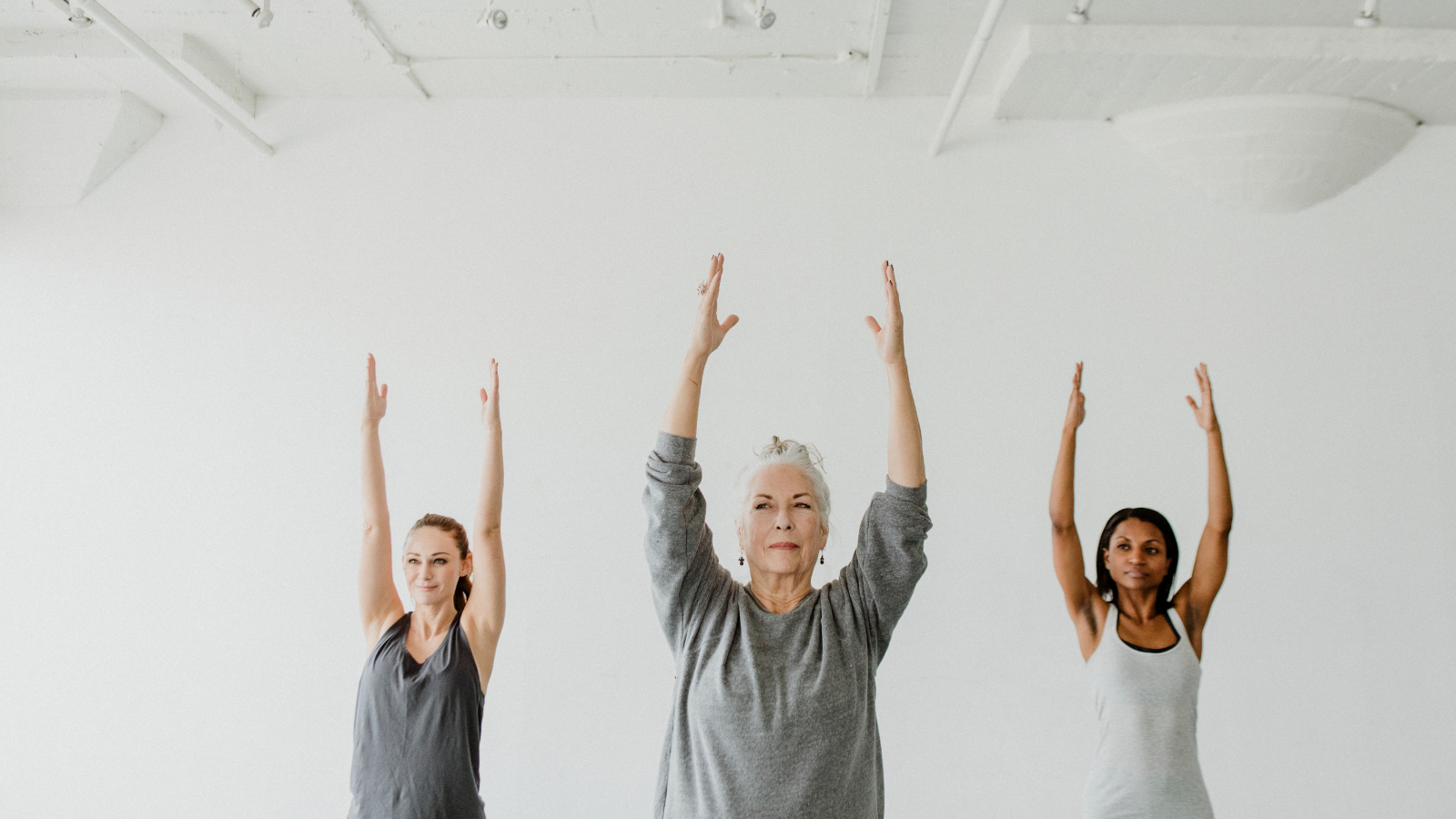
According to experts, building upper body strength is one of the easiest and most beneficial things you can do for your health as you age. Upper body strength is critical for balance, injury prevention, and longevity. Here’s why:
- The upper body controls your ability to perform everyday activities such as reaching, pulling, pushing, and lifting. Being able to perform these tasks is key to maintaining independence in our 70s and 80s.
- A strong upper body improves flexibility, mobility, and range of motion.
- Upper body strength increases muscle mass, which also means better bone density.
- Upper body strength reduces the risk of diabetes and keeps the heart-healthy. Yoga improves heart health by increasing circulation and blood flow. In addition, practicing yoga can help lower blood pressure, cholesterol, and blood glucose levels, as well as the heart rate. This can all add up to a lower risk of hypertension, stroke, and heart disease.
- A strong upper body improves the quality of life, along with increased lung capacity. This is particularly important as we tend to become more sedentary as we get older which negatively impacts breathing.
- Upper body strength helps us maintain good posture and prevent pain. Posture and pain go together. Pain creates tension and tension leads to pain. When we don’t have good posture, we tend to have pain. Improving posture strengthens the arms, shoulders, and upper back muscles that make good posture possible.
Yoga for Upper Body Strength
Happily, you don’t have to be able to get on the floor in order to improve upper body strength with yoga. Standing poses where the arms are active can build strength through isometric movements in which you hold the arms in one position for several breaths. For example, Warrior I Pose (Virabhadrasana I) or Tree Pose (Vrksasana) with the arms held overhead builds arm and shoulder strength.
If you’d like to increase the amount of load on the muscles, you can move in and out of a pose, lifting and lowering your arms. Alternatively, adding simple props, such as a block or strap, adds resistance and increases muscle engagement.
To get you started, here are three variations of Warrior II Pose (Virabhadrasana II) that focus on strengthening the arms, shoulders, and upper back. Substitute two plastic water bottles for greater resistance (or if you don’t own yoga blocks). Need more support? Try Warrior II Pose seated in a chair.
Basic Warrior II Pose
- Step your legs wide (about 3-4 feet apart) with both feet facing forward.
- Turn your right foot 90 degrees and your left toes in slightly.
- Bend the right knee so it is directly in line with your right ankle.
- Then try one of the following arm variations.
Arm Variation #1
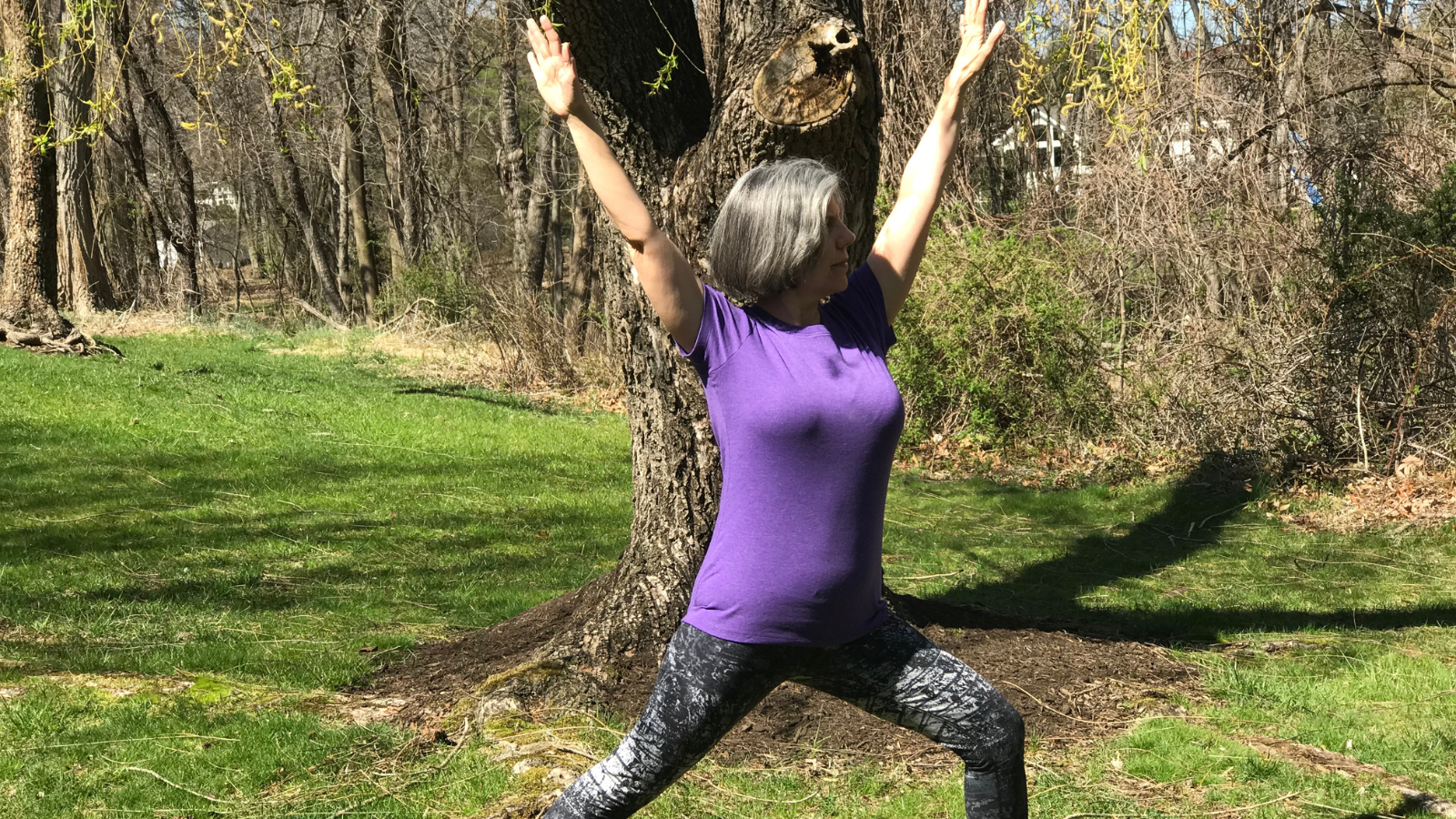
- Inhale both arms toward the sky in a V, palms facing downward.
- Lift and lower the arms with the breath 4 to 6 times, then stay with the arms lifted for 4 to 5 breaths.
- Notice the effort in your shoulders and upper back.
- Exhale your arms to your sides and repeat to the left.
Arm Variation #2
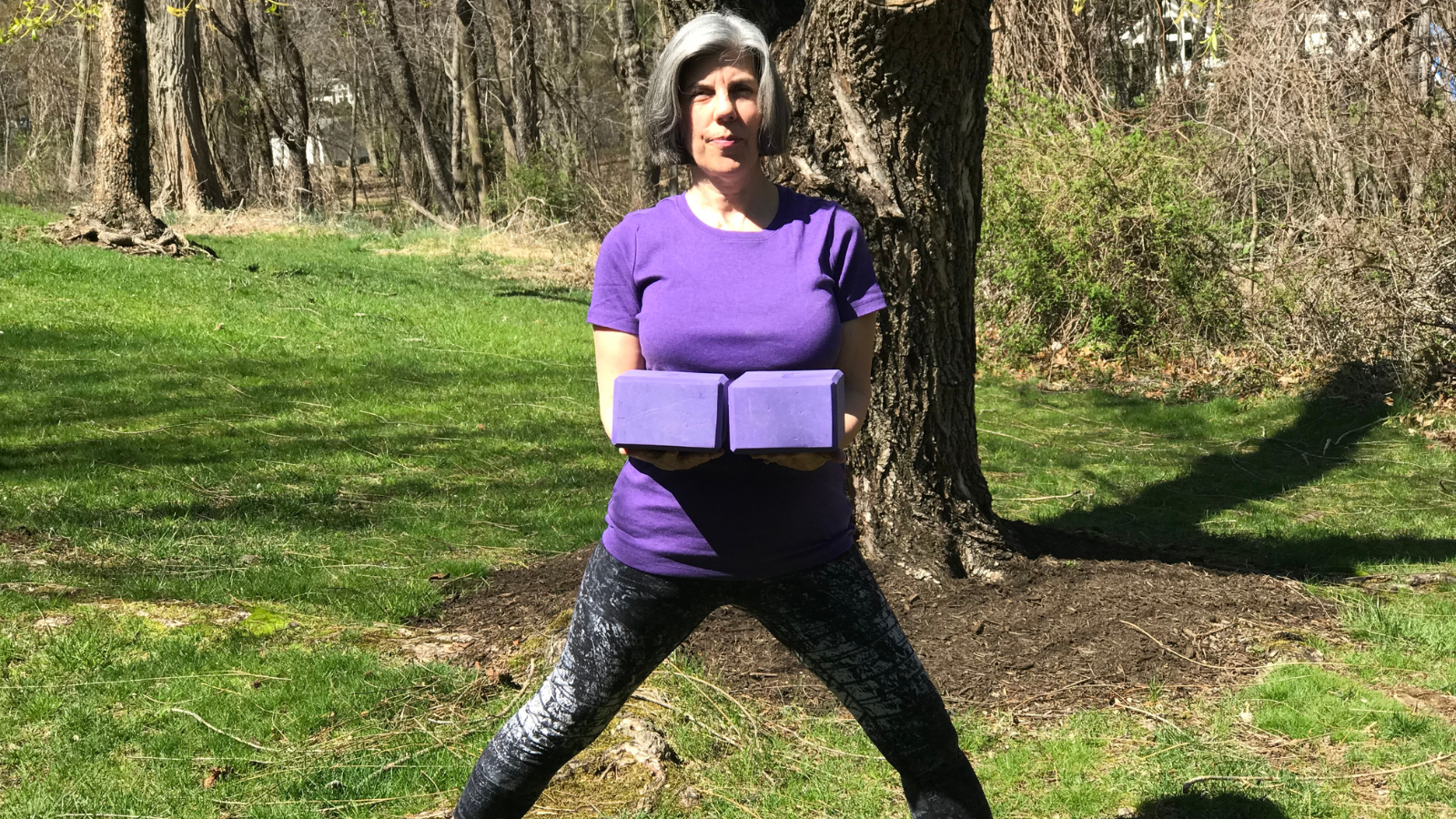
- Starting as above with the legs wide, knees straight and feet turned to the right, balance a block on the palm of each hand.
- Tuck your elbows into your waist so the blocks are at about waist height.
- On an inhalation, bend your right knee and extend your arms, palms, and elbows in line with your shoulders.

- Exhale hands back in front of your torso.
- Move in and out of the pose 4 to 6 times, then stay with arms extended for 4 to 5 breaths.
- Observe the sensations in your upper chest and back.
- Be sure to repeat on the opposite side.
Arm Variation #3
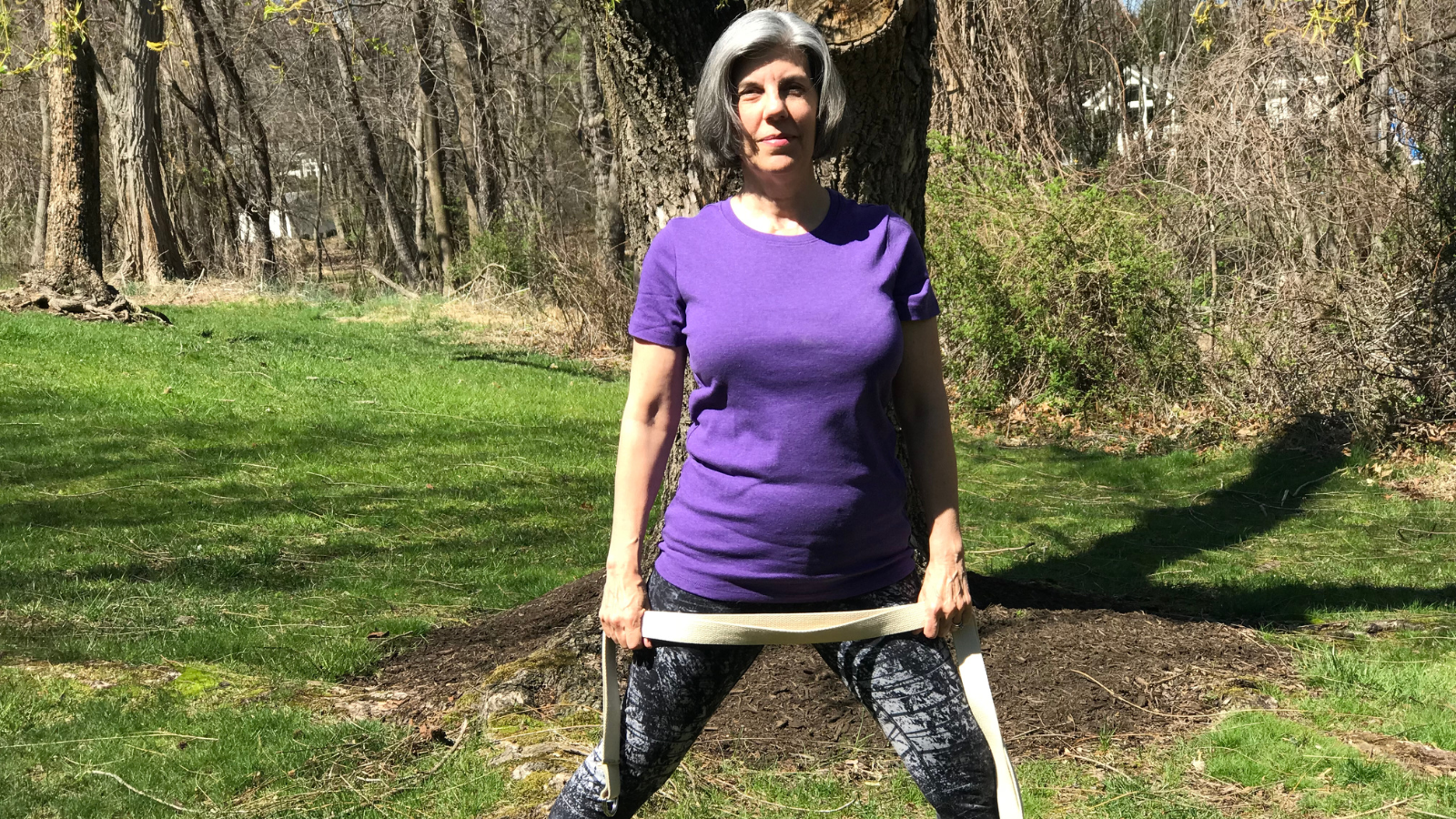
- Beginning as in Variation 2, hold a yoga strap firmly between your hands, knuckles resting on your thighs.
- Bend your right knee as you inhale your arms overhead, pulling the strap apart.
- Flow in and out of the pose 4 to 6 times, lifting and lowering your arms.
- Then pause with arms overhead for 4 to 5 breaths, maintaining an outward pull on the strap.

- For added challenge and upper body strengthening, bend your elbows, bringing the strap behind your head. You may need to slide your hands further apart in order to bring the strap behind your head.
- Keep both elbows lifted, drawing them back to strengthen your pectorals (chest muscles).
- Again, feel free to alternate arms overhead with elbows bent several times before holding for 4 to 5 breaths.
Experiment with using a yoga strap and block in other yoga poses to bolster upper body strength. And remember, consistency is important, so be sure to practice some combination of upper body strength poses at least three times a week. Happy practicing!
Also, read...
Concerned about Your Posture? How Yoga Can Help
Dec 20 – Baxter Bell, MD, eRYT 500, C-IAYT
Yoga for Back Pain: Are Your Tech Devices Ruining Your Posture?
Nov 16 – By: Stefanie Foster
Hyperkyphosis (Dowager’s Hump) Carries Similar Risks as Osteoporosis, Research Finds
Oct 20 – Eva Norlyk Smith, Ph.D.
Related courses
Reprinted with permission from Beverly Davis Baird/Wisdom Tree Yoga.

Beverly Davis-Baird, MA, e-RYT200/RYT 500, C-IAYT is a New Jersey-based yoga therapist, writer, and educator. She specializes in making yoga accessible for adults 50+, offering classes and workshops for back care, arthritis, bone health, balance, posture, and healthy aging. An educator at heart with over 20 years of experience as a public school teacher, Beverly brings her knowledge of individual learning styles to her classes, providing instruction that is clear, concise, inclusive, and compassionate. Bringing over 30 years of experience and training, she considers herself a lifelong learner and believes that the practice of yoga should bring spaciousness and release from tension, not create it. As such, she strives to make yoga accessible to people of differing abilities, believing the real benefits of yoga come from what is taken with you outside of class and into your life. To read her blog or learn more about her teaching schedule and latest offerings, please visit www.wisdomtreeyoga.com.
Recent articles
Your Brain on Yoga: 4 Ways Yoga May Help Mitigate Cognitive Decline
Jan 01 – Eva Norlyk Smith, Ph.D.
Avoiding the Resolution Blues: How to Make Your New Year’s Resolutions Count
Dec 31 – Eva Norlyk Smith, Ph.D.
Categories
Upcoming courses
Recent articles
Almost there...
Sorry, we couldn't find anything...
Yoga Teaching
Your Brain on Yoga: 4 Ways Yoga May Help Mitigate Cognitive Decline
Can yoga help curb the risk of dementia and Alzheimer’s? A review of 11…
Jan 01 – Eva Norlyk Smith, Ph.D.
Yoga Teaching
Avoiding the Resolution Blues: How to Make Your New Year’s Resolutions Count
Ah – the beginning of a New Year. Like a baby, there’s nothing like…
Dec 31 – Eva Norlyk Smith, Ph.D.
Yoga Research
Yoga and Weight Loss: How Much of a Calorie Blaster Is Bikram Yoga Really?
Bikram Yoga (Hot Yoga) has soared in popularity in recent years, thanks in…
Dec 29 – By:



